Remote Alaska communities benefit from UAF renewable energy research
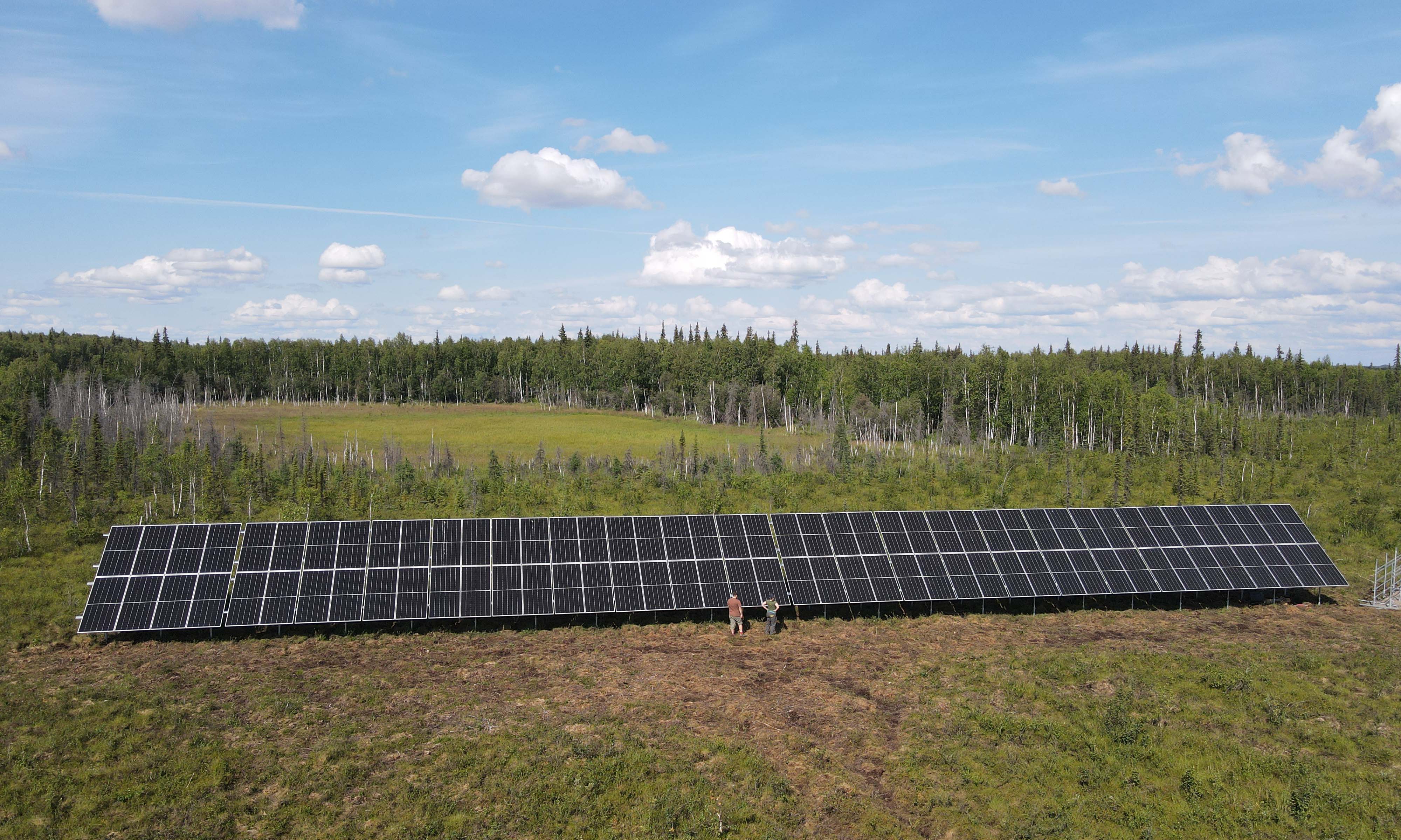
Two people walk in front of a 50-kilowatt solar array in the Yukon River community of Galena.
May 03, 2024
By Yuri Bult-Ito
Renewable energy generation is increasing around the world. Alaska, while remote and in an Arctic climate, is no exception.
Communities in Alaska, including remote localities that are far from big cities and often only accessible by air or boat, have some of the most innovative renewable energy technology.
Indeed, Alaska, with around 12% of the world’s microgrids, is a hotspot of innovation when it comes to energy. Many of those microgrids use renewable energy. And the University of Alaska Fairbanks’ Alaska Center for Energy and Power plays a part in the energy innovation pipeline.
A microgrid is an electricity distribution system that balances energy resources (generators) and energy users (loads). It can be connected to a larger, main power network (macrogrid) or it can function independently as a remote, islanded grid.
More than 200 remote communities in Alaska have independent microgrids, most of them diesel-based. Their generation capacity ranges from 100 kilowatts up to 5 megawatts,. More than 70 of these microgrids generate a portion of their power with renewable energy, such as solar, wind, biomass and hydro. They generate their own electricity; they don’t send their electricity elsewhere nor receive electricity from outside entities.
Part of ACEP’s role in the grander energy scene is helping some of these remote communities get the most out of their microgrids by saving a great deal of their time and expense. ACEP works to help them choose whether renewable energy is the right choice for them and what sources — such as solar, wind, hydro — are optimal for them.
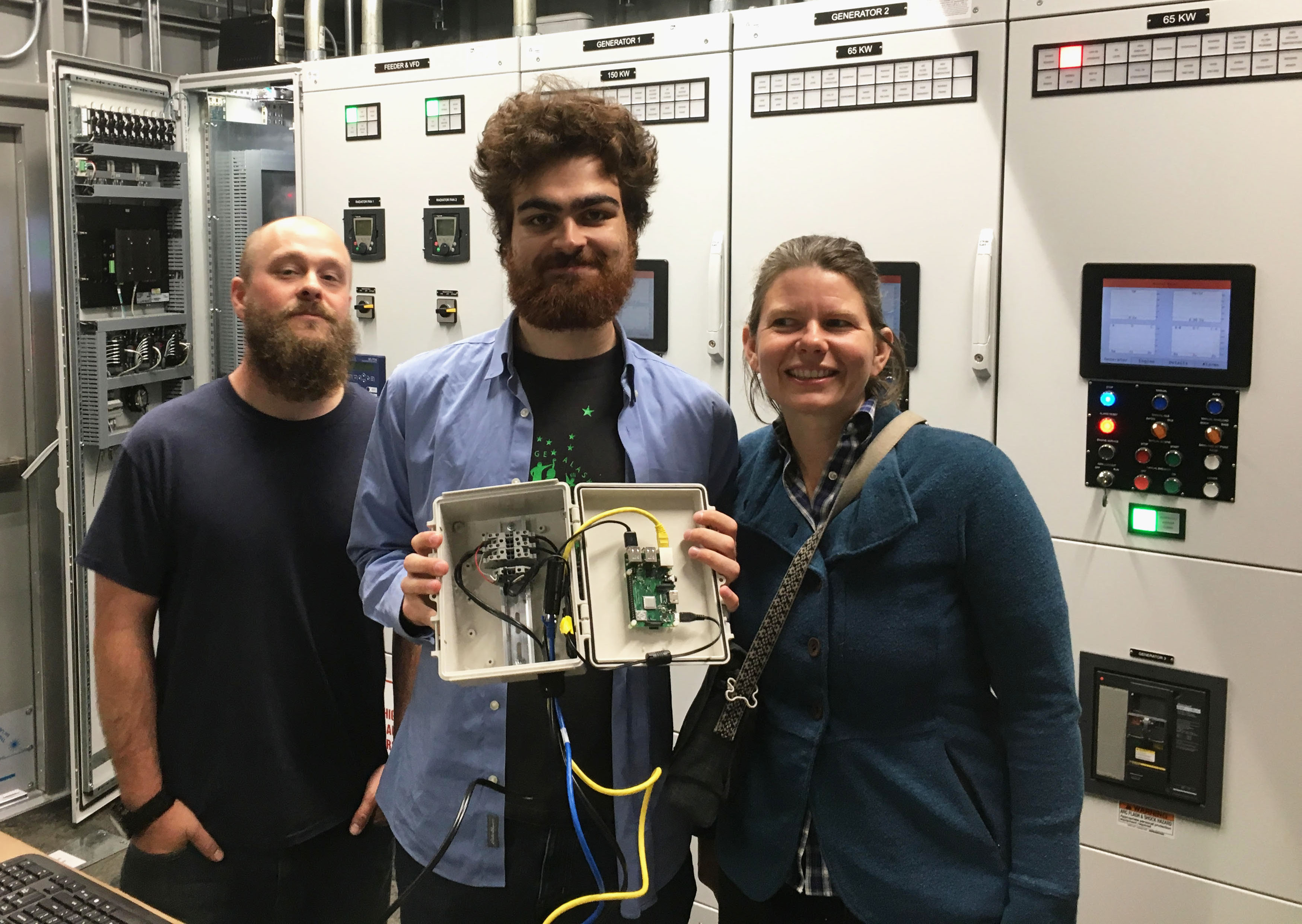
Henry Toal, center, and Michelle Wilber, right, stand with power plant operator Justin Tuomi in Port Heiden before they installed an ORCA device.
For example, ACEP’s Onsite Realtime Collection and Acquisition project aims to help communities in the development and effective integration of renewable energy.
ORCA is an inexpensive plug-and-play device, developed by ACEP researchers and the Office of Naval Research, that allows easy collection of power plant energy use data. The data directly coming from the communities enables ACEP to analyze them, and this helps communities better understand their current energy consumption patterns. With that information, they can make informed decisions that suit their conditions and needs in planning and integration of renewables, batteries and other upgrades.
“The city of Galena, together with Tanana Chiefs Conference and other partners, continues to use the powerhouse data gathered by the ORCA when planning future renewable energy projects in the community,” noted Henry Toal, a research engineer at ACEP.
“We are very excited that the Galena ORCA has proven so useful,” he said.
This is just one way that data from remote Alaska communities can be collected and analyzed.
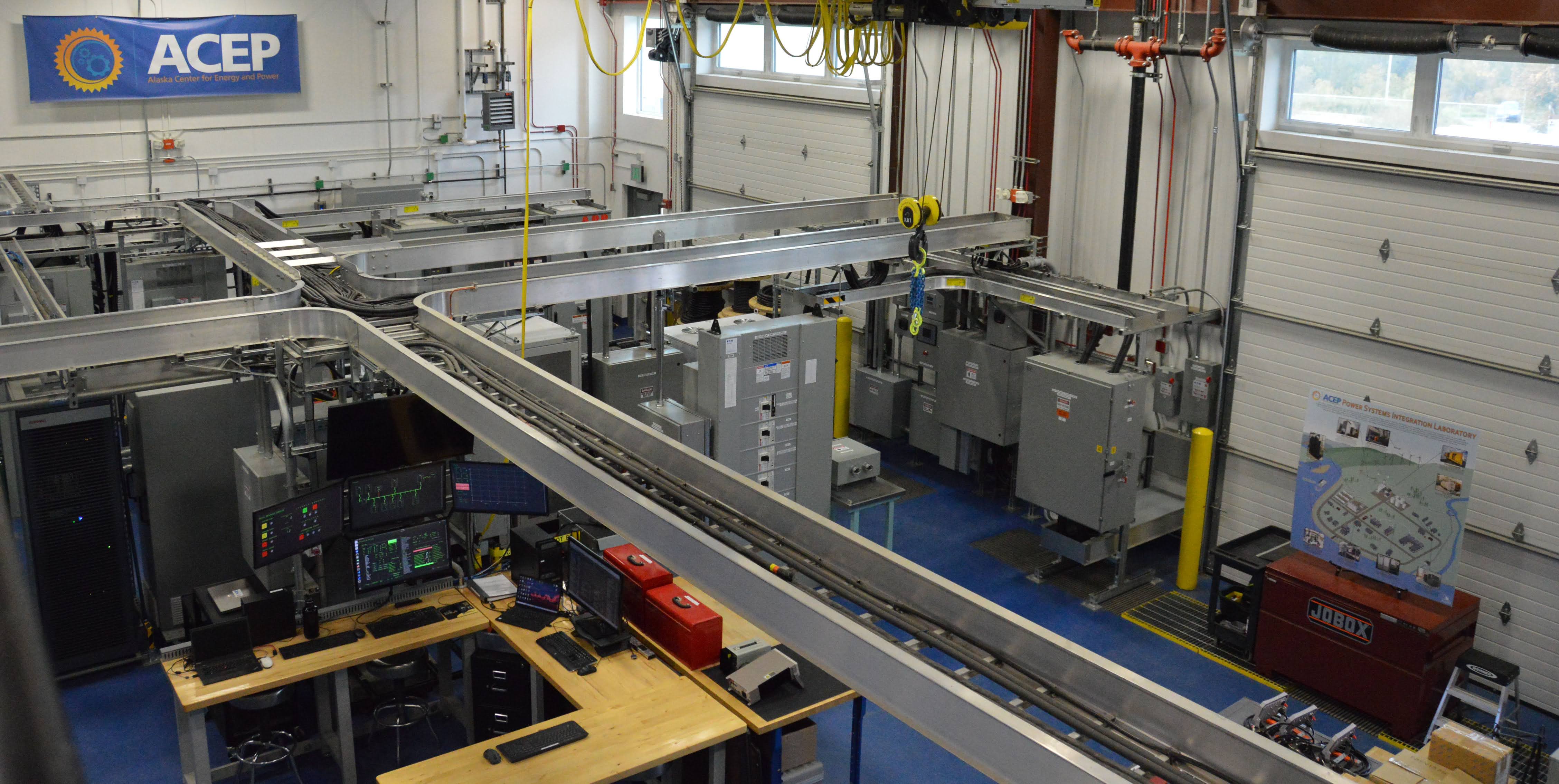
A bird’s-eye view shows the main area of the Energy Technology Facility.
In fact, ACEP has the ability to take digital data from just about any power plant and analyze it in its Power Systems Integration Laboratory at the Energy Technology Facility on the UAF campus.
The PSI Lab is sized to emulate rural Alaska microgrids, which have smaller power levels than people Outside may consider. This design allows the PSI team to take energy load data from specific communities, plug it into the lab system and run simulations closely mimicking real-world conditions. Communities are able to use the results to determine whether certain renewables would work well with their current systems.
The PSI team also runs simulations of integrating renewable energy sources into a community by using actual solar and wind data collected from that very community, giving them a realistic idea of what local resources may work and what power plant upgrades may be necessary. The team can run this simulation with or without a battery energy storage system — a device that enables energy from renewable sources to be stored and released when the power is needed most.
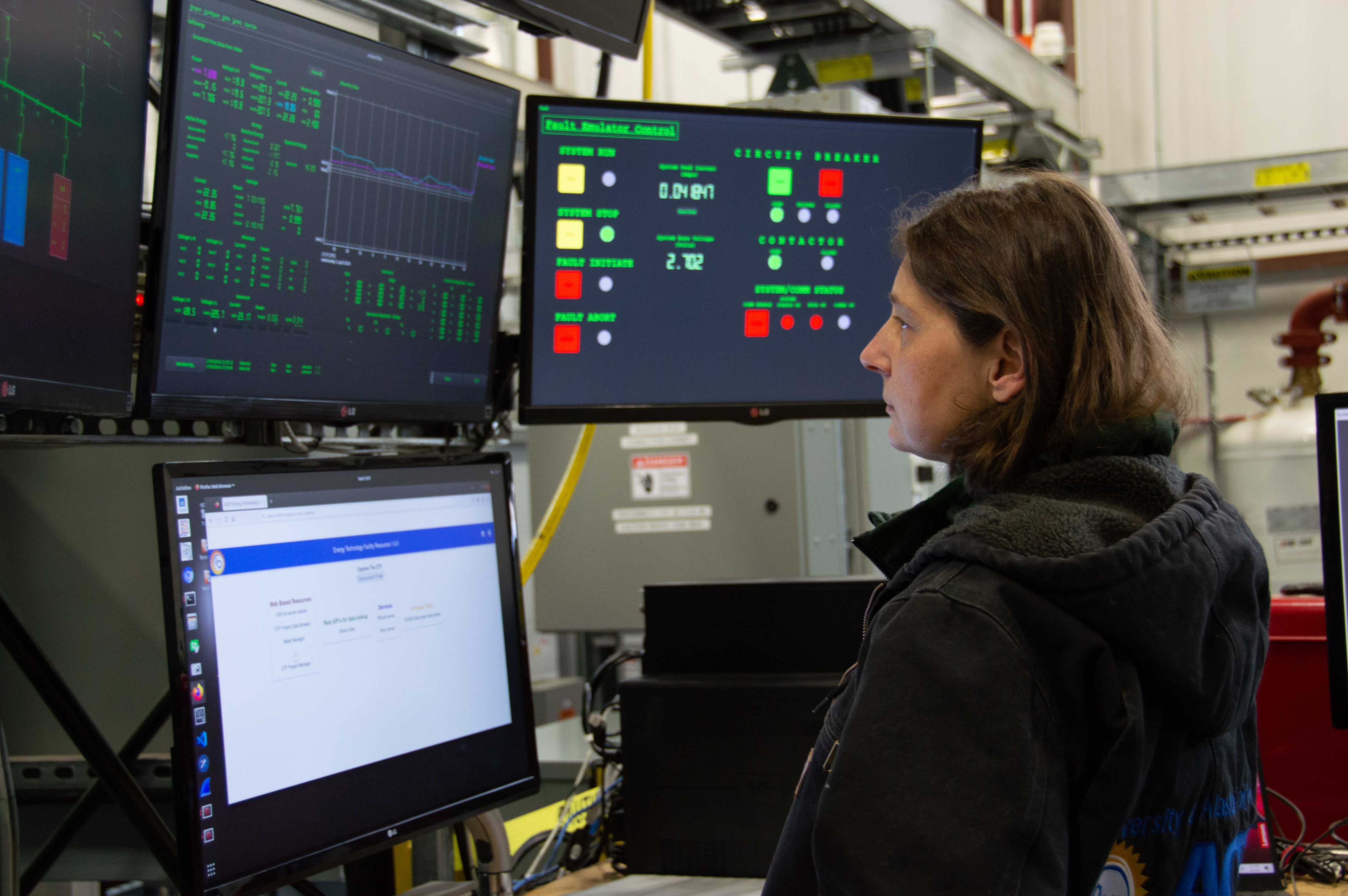
Tawna Morgan, a software developer and data analyst at ACEP, works at the monitor station in the lab. The monitors display data from equipment such as energy storage systems and wind and solar energy simulators. All of the data is combined to analyze the result of a research-testing program.
Following these simulations, the team shares the results with the communities, showing them what they would look like with their readily available natural resources. This helps ensure smooth integration of renewables with their existing diesel-based systems.
Work like this not only helps the communities but also private companies that may be developing systems to work in remote microgrids.
An example is a grid bridging system, or GBS, which is a short-term energy storage system that enables diesel generators to turn off for periods of time and run on renewables to reduce fuel use.
The recent installation of a GBS in remote Alaska communities was first tested and optimized in the PSI Lab.
“Engineers from the Alaska Village Electric Cooperative, ACEP and the manufacturer of the GBS performed testing in the PSI Lab and found that the controls needed to be reconfigured before it would be able to perform its intended functions,” explained Emilia Sakai Hernandez, the PSI project manager.
David Light, ACEP’s Energy Technology facility manager, stands by a GBS module outside the facility.
The manufacturer had assumed that its system, which had been created in Europe and previously tested on an urban, grid-connected microgrid in Germany, would work on rural microgrids in Alaska. However, the GBS needed months of redesign and overhaul in the lab before successful delivery to the rural Alaska communities.
“We were glad that this was discovered while testing in Fairbanks rather than in St. Mary’s [one of the communities where the GBS was to be installed],” said Sakai Hernandez.
“The testing in Fairbanks identified fixes that ensured that the system could function in a remote, islanded community microgrid in Alaska," she said.
The ACEP lab’s work not only resulted in a system that would help the needs of the communities but also helped the manufacturer fine-tune its product for the actual Alaska environment.
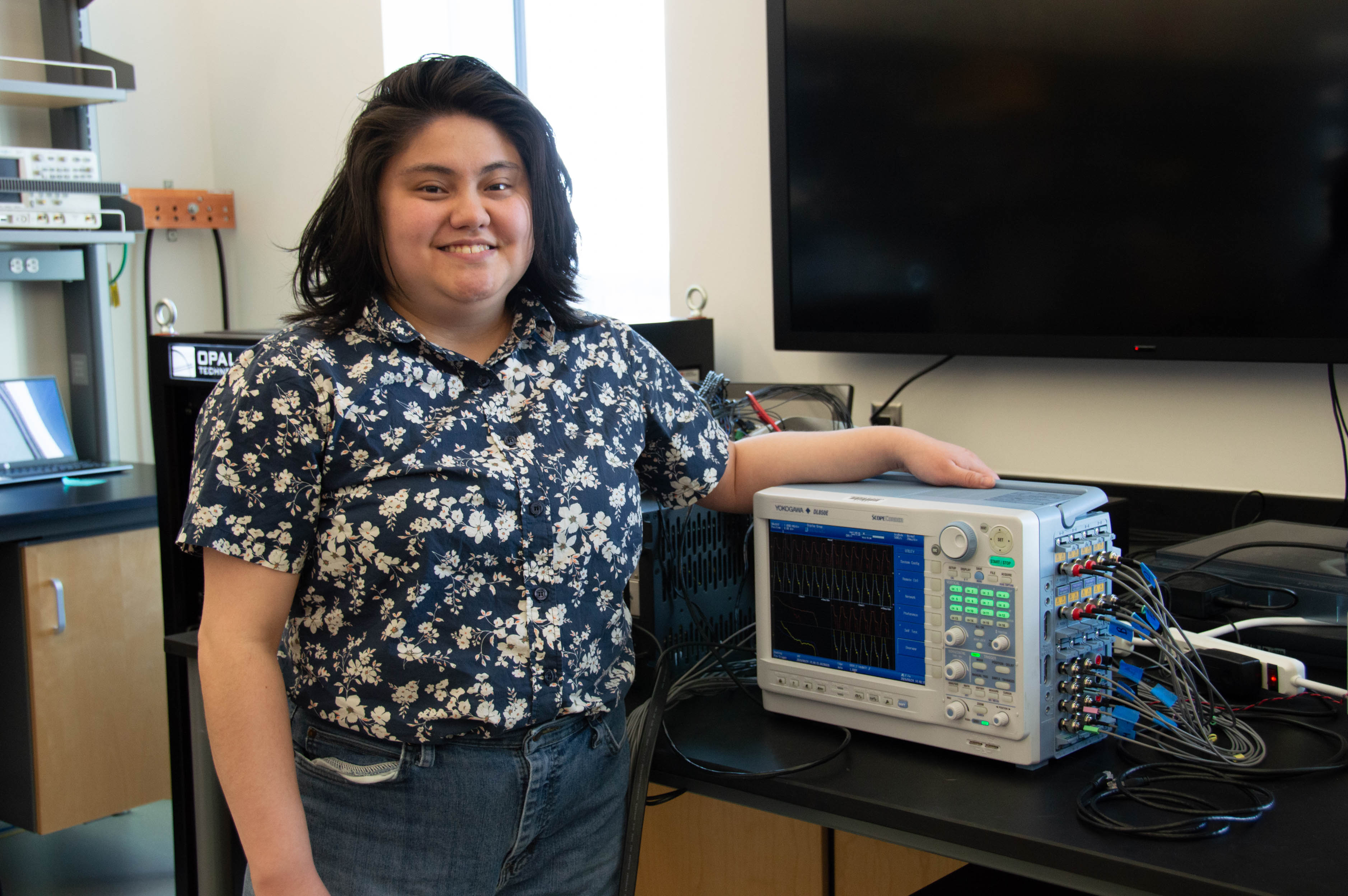
Emilia Sakai Hernandez stands by an oscilloscope that lets ACEP researchers see different electrical events and characterize the behavior of electric power supplying devices.
The work done in the PSI Lab plays a significant role on the national level, too. ACEP is a member of a nationwide consortium called UNIFI, which is trying to develop certain inverters — hardware that converts direct current power into alternating current — as the nation moves toward renewables. Because the PSI Lab can emulate a microgrid in rural Alaska, it serves a key role in helping to develop and troubleshoot designs that are unique to remote, small communities. The tests done at the lab ensure that rural Alaska is not left behind in the energy transitions.
Come meet Henry Toal, Emilia Sakai Hernandez and other UAF researchers and explore Arctic research by trying hands-on activities during the Arctic Research Open House! This annual family-friendly event will take place on the UAF Troth Yeddha’ campus from 4-7 p.m. on Thursday, May 16, and is free and open to the public.


